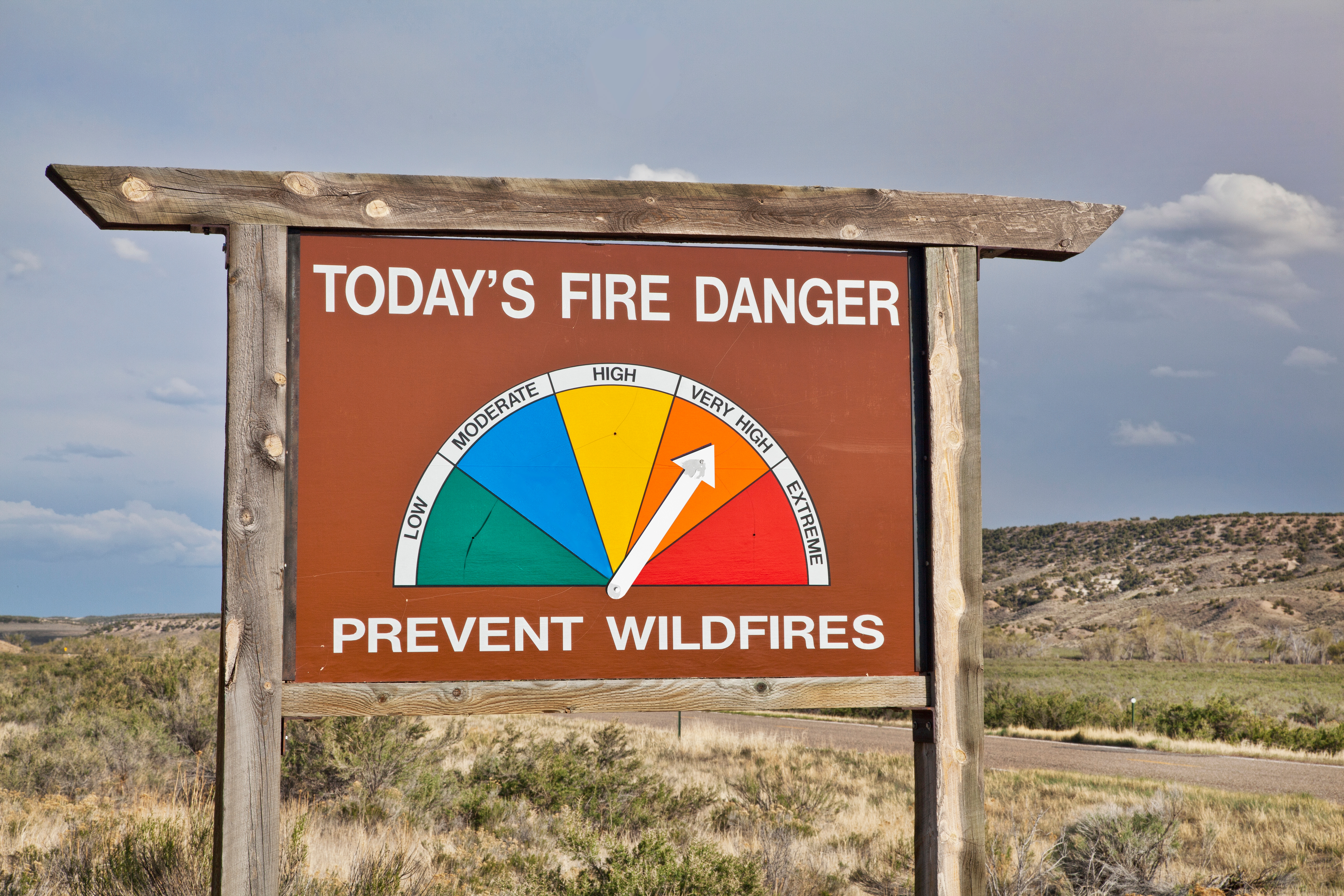How can you design solutions that truly build resilience in your community? There are many tools you can use to help your community address current and future challenges and opportunities. A key tool Colorado State agencies use is the ‘Resiliency Prioritization Criteria. These nine criteria help agencies apply core aspects of resilience to their initiatives, grant programs, and strategies. These criteria can also help communities advance several resiliency benefits with limited resources.
Read on to learn more about resiliency criteria, how they are used, and how they can be applied within the context of your community.
What are the Resiliency Prioritization Criteria?
The following resiliency criteria can be used to compare ideas, prioritize grant proposals, and evaluate program design and strategies to enhance overall resilience. While incorporating as many of these criteria as possible is ideal, it is also most effective to consider them as a system versus a checklist by asking how each of these elements can build on and support one another to achieve resilient outcomes. This concept is illustrated further in the examples provided later in this article.
- Co-benefits: Provide solutions that address problems across multiple sectors (including community, economic, health and social, housing, infrastructure, and watersheds and natural resources) to create maximum benefits.
- Innovation: Advance creative approaches and techniques that provide new solutions and encourage continual improvement and advancement of best practices - serving as a model for others in Colorado and beyond.
- High Risk and Vulnerability: Ensure that strategies identify risk and vulnerability, and directly address the reduction of risk to human well-being, physical infrastructure, and natural systems. Strategies should consider impact to populations of the community that are often marginalized.
- Adaptive Capacity: Include flexible and adaptable measures that consider future unknowns of changing climate, economic, environmental, and social conditions.
- Economic Benefit-Cost: Make financial investments that can sustain changes and have the potential for economic benefit to investors and the broader community - through both direct and indirect returns.
- Harmonize with Existing Activity: Expand, enhance, or leverage existing efforts. Engage relevant stakeholders to maximize these efforts and reduce potential conflicts.
- Social Equity: Provide solutions that are inclusive, with consideration to populations that are often most impacted by disruptions. Address inequities, remove barriers, and benefit populations by providing access or meeting functional needs. Equitably distribute economic benefits.
- Long-term and Lasting Impact: Create long-term gains to the community with solutions that are replicable and sustainable, creating benefits for present and future generations.
- Technical Soundness: Identify solutions that reflect best practices that have been tested and proven to work in similar regional contexts. Identify measurable indicators to assess performance and success.
Practical Application: Examples of How the Criteria Create Resilient Projects
Fort Collins Poudre River Whitewater Park

Image Caption: Many residents and visitors enjoy the Downtown Poudre River Whitewater Park. Recreators enjoy the trails along the river and the whitewater drop structures in the river itself. Image Credit: City of Fort Collins
The Poudre River runs through Fort Collins. In the past, the river was an industrial corridor. The City wanted to enhance this corridor and turn it into a local amenity. Community members expressed interest in many different improvements to the river. These included improving habitat for local wildlife, reducing flood risk, and creating more recreation opportunities. Local businesses along the urbanized part of the river wanted to make the area more vibrant. In 2019, the City installed the Whitewater Park in the section of the river that runs through the downtown. The park included:
- Whitewater drop structures (for recreators to practice with)
- Re-engineering the floodplain to increase safety
- Adding a bridge to improve pedestrian connection to downtown
- Installing a fish passage
The Whitewater Park showcases four of the Resiliency Prioritization Criteria:
- Co-benefits: The Whitewater Park design integrated the interests of the many stakeholders, producing many co-benefits within a single project. These benefits included a waterfront that increased downtown vibrancy, new amenities for recreation, increased flood safety, and improved ecosystem quality.
- High Risk and Vulnerability: The project identified and helped reduce vulnerabilities to two hazards - Flood and extreme heat risk by broadening the flood plain and creating a safe place for people to cool off on extreme heat days.
- Economic Cost-benefit: Enhancing the river helped revitalize downtown and attracted new recreators. Both of these changes produced positive economic returns for the local community.
- Harmonize with Existing Activity: The Whitewater Park connected to Fort Collins' other plans including the Fort Collins Master Plan, the Old Town Basin Water Quality Master Plan, and the Framework for Environmental Action.
Embedding the Criteria in the State Wildfire Resiliency Code

Image Caption: Improving building codes is one of many actions that can be taken to reduce wildfire risk.

Image caption: Colorado’s innovative Wildfire Resiliency Code only applies to new construction and significant renovations within the Wildland-Urban Interface (WUI). These are buildings that are close to naturally vegetated areas and, as a result, are at greater risk of wildfires.
In 2025, Colorado adopted the first ever Colorado Wildfire Resiliency Code (CWRC) for new construction and significant renovations. This code is designed to help make structures built in the wildland-urban interface (WUI) more resistant and resilient to fire, and thus, reduce fire risk statewide. The CWRC also describes landscaping practices that can also help reduce wildfire risk.
The CWRC exemplifies the use of Resiliency Prioritization Criteria to embed resiliency:
- Innovation: This code is the first of its kind in Colorado and Colorado is one of only a handful of states in the country to adopt a statewide wildfire code. The code is also unique in that it provides local jurisdictions flexibility in how it is adopted and enforced. The code also requires the use of state-of-the-art materials and design such as Class A roofing, ember-resistant vents, and wildfire resilient site design to reduce wildfire spread and wind-blown embers.
- High Risk and Vulnerability: The CWRC focuses on improving safety for the communities that face the greatest risk from wildfires - communities in the WUI - maximizing its impact.
- Long-term and Lasting Impact: The code is designed in anticipation of increased risk in the future, both as incidents of wildfire become more frequent and intense, and as population growth pushes more construction into the WUI. The code is rooted in forward thinking, ensuring preventative steps are taken now that help protect housing and building stock from catastrophic loss later on.
- Technical Soundness: The resiliency code was created by the Colorado Wildfire Resiliency Code Board and adapts the International Wildfire Urban Interface Code (IWUIC) to be more suited for Colorado communities. This Board is made of subject matter experts from many different areas including home and commercial construction, affordable-housing construction, urban and rural communities, fire engineers, utilities, and wildfire mitigation professionals. Together, they used evidence-based decision making to integrate proven best practices into the CWRC.
- Economic Cost-Benefit: The CWRC is also economically advantageous. Research shows that while homes built to code may cost slightly more than traditional construction, they can significantly reduce future economic losses—by up to 43% (Source: Headwater Economics), as well as increase their insurability.
Resources for Building Resilience: Using the Criteria in Your Context
Each criteria can surface questions to work through to improve the resiliency of a project, plan, or grant funding program. There are many resources to support integration of the criteria, including the module available through the Resiliency Playbook, to help you explore these questions.
Watch this webinar for more information about and examples of the Resiliency Prioritization Criteria. Note, the webinar also discusses resiliency in funding, and was developed to support integration of resilience during the rollout of funding associated with the Infrastructure Investments and Jobs Act and Inflation Reduction Act, but highlights many of the points discussed in this article.
Additional Resources for Integrating Resiliency Criteria
- ICLEI Resource Library (including case studies, podcasts, and policy documents)
- Case Studies, US HUD Office of Policy and Development
- Case Studies, US Climate Resilience Toolkit
Additional Resiliency-Related Guidance Resources
- Community Readiness and Resilience Toolkit, Colorado Resiliency Office
- Post-Disaster Recovery Toolkit, Colorado Resiliency Office
- Guidance for Local Government Climate Adaptation, Colorado Resiliency Office
Keep the Conversation Going
Want to connect with a network of people exploring these ideas? Join the Colorado Resiliency Community of Practice on LinkedIn.
The Colorado Resiliency Office
Build Resilience Across the State - Participate in the 2025 Colorado Resiliency Framework Update!
We hope you will become a collaborator in updating the Colorado Resiliency Framework’s 2025 Update. Catch up on the discussion so far with the materials posted to our website or opt-in to receive ongoing updates as the collaborative planning process unfolds.
Learn more about the Colorado Resiliency Office, including additional opportunities for technical assistance and resources.
